The Latest from TechCrunch |  |
| MOG Gets An Overhaul, Looks To Become Definitive Music News Portal Posted: 15 Apr 2009 08:00 AM PDT Mog, a music-centric blogging network that launched back in 2006, is evolving once again. The site has relaunched its homepage at Mog.com to serve as an authoritative destination site for music news. It has lofty goals, aspiring to become something akin to a ‘Huffington Post for music’ with a constant stream of content that lures visitors to come back multiple times a day. Coming up with that much quality content isn’t normally easy or cheap, but MOG has at least one ace in the hole: its entire editoral staff consists of only six people, and its contributing authors aren’t getting paid - they’re just writing about what they love. MOG has built up a thriving network of bloggers over the years, who produce upwards of 5,000 music-related blog posts a week. Most of these bloggers are found on MOG itself, using the site’s own publishing tools to share with other members (called MOGers). The site has also forged deals with around 300 external blogs, driving traffic to them by syndicating portions of their content on MOG in return for allowing MOG to serve as their ad network. Between all of these blogs, MOG sees around 5.7 million unique visitors and 40 million page views a month.
Before now, MOG has largely failed to capitalize on its expanding base of bloggers - users browsing its homepage would be shown the most recent posts, with no system present to filter for quality or subject matter. As the site has grown, this stream of posts has become nearly unusable (some of MOG’s 5,000 posts are not written by particularly adept writers), which had led to a poor user experience. To put it bluntly, nobody ever really visited the MOG homepage again after seeing it for the first time. Now MOG is looking to take advantage of the content its users are producing. The new homepage features around two dozen widgets, each of which will focus on a different topic in music news. A handful of these - namely the top news stories for the day - will always remain at the top of the page, but users will be free to rearrange or remove the remainder of the widgets, which focus on topics including album reviews, upcoming music festivals, and must-see music videos. Each of these is created by the site’s human editors, who cull through posts on the MOG network and pick out the best ones, tweaking the headlines as needed to appeal to a large audience.
Beyond the homepage, users can now browse through a section dedicated to other blog posts, but unlike the old system (which forced users to wade through junky content), stories will now be surfaced using an algorithm based on the popularity and reputation of their writers. Users will also be able to vote up their favorite posts, giving less established bloggers a chance to make it to the spotlight. The interface is getting an overhaul to match its impressive (but still mythical) music streaming service, which is still in the works but will not appear for at least another few months. MOG isn’t going to be the only company vying to be the music world’s news site of choice - competitors include sites like Pitchfork and Stereogum as well as old standbys like Billboard. But MOG has a leg up on more traditional sites because it has such a large flow of new content that it can provide without hiring a team of dedicated writers. So even if the road to popularity is long, MOG can probably just sustain itself until its competitors die out. In honor of the site’s relaunch, MOG has also put together a rap battle song (embedded below), written by founder David Hyman and performed by Sam F. And while I’m no rap critic, it’s not half bad. Crunch Network: CrunchGear drool over the sexiest new gadgets and hardware. | ||||||||||||||||||||||||||||||||||||||||
| Attack of The Frames: VideoEgg Introduces The Twig Ad Bar Posted: 15 Apr 2009 06:48 AM PDT
Frames are definitely back. More and more Web apps like the Diggbar are using frames to overlay a thin toolbar on top of other Websites, and the practice is causing some controversy because frames are generally frowned upon as messy Web design. Today, VideoEgg is introducing a new ad unit called the Twig, which looks like a toolbar either at the top or bottom of a Web page. The Twig ad bar frames the site and is always visible no matter how far a reader scrolls down the page. When you click on the bar, you get a three-second warning before a VideoEgg ad takes over the whole page as an overlay. You can see a preview of how it works here. Twig is designed for blogs an other sites with comments and other elements that create long pages and cause readers to scroll down past the regular ad units normally on the side. The ads that appear after you click can be any of a variety of video or other interactive ads that VideoEgg specializes in. The Twig ad bar itself is similar to an increasingly common ad unit in videos: an overlay bar along the bottom that you click on to see the full ad. I like the fact that VideoEgg is taking something that seems to be working in video ads and bringing it over to regular Websites. And the Twig ad bar is certainly preferable to those annoying ad units you see on some major news sites that pop up in the middle of the page and move down as you scroll, blocking what you are trying to read. (Note to advertisers: those floating ads do nothing but make me associate my feelings of anger with your brand). The thin bar at the top or bottom is unobtrusive enough and opt-in. And since it will be the sites themselves rather than a third party app imposing the frame, it probably won’t raise as many objections as something like the Diggbar. After all, as a pervasive ad unit it is not so bad. The issue is not so much Twig on its own, it is the recent proliferation of frames across the Web. What happens when two or more frames collide? You get a bunch of toolbars stacked on top of one another, diminishing the available real estate on any given page. What starts out as a clean, unobtrusive toolbar can quickly become clutter. For instance, if you use the Diggbar on that Twig preview page, it looks like this:
Crunch Network: CrunchBase the free database of technology companies, people, and investors | ||||||||||||||||||||||||||||||||||||||||
| TwitPic Hits 1 Million Users, Brick Wall Posted: 15 Apr 2009 06:46 AM PDT
Sharing photographs and other images on Twitter is a fairly natural and thus wildly popular extension of the micro-sharing service’s main reason for being. We’ve earlier noticed how TwitPic seems to have emerged as the leader of the pack. Its growth rate is practically up to par with the increase in visitors and users Twitter itself is seeing the past couple of months. Traffic to TwitPic.com has spiked to about 2.3 million unique visitors per month according to Compete stats (which, based on experience, means it probably receives a good deal more) and last night the TwitPic account boasted about having signed up its 1 millionth user. The downside of TwitPic is that it’s becoming quite a burden for just one guy (Noah Everett) to operate. Remarkably, he has done a good job of keeping the service up most of the time, but today the service is experiencing some major hiccups. While the website is still reachable, it’s no longer possible to log in with your account and all direct links to uploaded photographs have gone dead, with a message saying that the picture in question does not exist anymore (ironically, it suggest other photos under that message, but also with dead links). Update: fixed now (around 7:30 AM) Naturally, users are up in arms about the downtime and the possibility that their pics may be lost. Mostly, they are confused about the message, and I guess it would actually be better for TwitPic if it were simply down completely, like it was last January (for nearly 24 hours). The Twitter account and blog of TwitPic remain silent over the issue so far (update: now citing ‘database issues’) and (once again ironically) the latest blog post - dated April 6 - mentions a move to a new data center, which supposedly upped the performance:
If TwitPic can’t keep up with the current growth, someone will sooner or later step up to the plate and challenge its dominance on the Twitter photo sharing playing field. Unless Everett comes up with a way to stabilize the experience, users might run to alternatives like Pixim and TweetPhoto, two web services we covered earlier. In fact, I think sooner or later someone should provide the small company with some seed funding, or acquire it outright. Crunch Network: CrunchBoard because it’s time for you to find a new Job2.0 | ||||||||||||||||||||||||||||||||||||||||
| SocialYell Lets Users Raise Their Voices About The Good Companies Out There Posted: 15 Apr 2009 04:19 AM PDT
From a technical or feature standpoint, SocialYell doesn’t bring anything new to the table, and simply borrows techniques from other popular social sites like Digg and Yelp to try and turn the website into a real community of engaged users (i.e. giving them the ability to rate, vote, share on other social networks, etc.). The main differentiator with other services, according to founder David Rostan, is that SocialYell users engage in ratings and votings not just for the sake of determining which organizations are more popular, but zooms in on specific company actions and initiatives to eventually surface which companies are on the right track (from a social viewpoint) and which ones aren’t. To avoid putting too much emphasis on the green aspect of being a non-evil company, the site is subdivided into 5 categories: environment, health, social equity, consumer advocacy and charity. SocialYell aims to become a place where users come together to add, discuss and rate organizations and possibly even individuals (i.e. politicians), but that’s not the whole story: representatives from companies are also invited to participate in the online conversation. From what I could gather, most organizations that want to do that will need to pay for membership, unless they’re a non-profit, and the ultimate goal for SocialYell is to give some of its profits back to charities.
Rostan hopes to “make organizations and business better global citizens” by rewarding social and environmental responsibility and hold companies accountable for their actions, which in turn should make the world a better place for everyone. It’s an admirable goal without question, but I can’t help but smile every time someone thinks a lone web service can have such a big social impact that it would benefit everyone, from consumers to businesses to the entire society, as the news release purports. Hope springs eternal, of course, although I just don’t think it works that way, and I also think there are far better, more extensive tools on the web today that can leverage the power of crowds to bring about changes in society. Your thoughts? Crunch Network: CrunchBoard because it’s time for you to find a new Job2.0 | ||||||||||||||||||||||||||||||||||||||||
| When Google Latitude Stalking Isn’t Such A Bad Thing Posted: 15 Apr 2009 01:54 AM PDT
You see, in her purse, her phone had Google’s location-based social networking service installed, and it was updating the location of her phone in real-time. So even though the thief hopped in a car, when the girl called her sister, she was able to tell police exactly where the criminal was. They arrested the man and got the girl’s purse back. It’s worth noting that the woman said she had the service running on her phone “as a joke,” so that she and her sisters could “stalk each other.” And that’s interesting because ever since it launched a few months ago, jokes have abounded about it being a tool for stalking. But at the same time, the program had a user base of over a million users just one week after it launched. People are clearly interested in using location data in social services, but it’s usually only negative connotations that are associated with stories about it. Here’s a positive one, but it still has some negative undertones. After all, if the girl’s sister knew exactly where the phone was, that means Google did too. Of course, Google has a policy not to share that information, but if push came to shove, and the authorities got the right warrant, Google would have to give up such information. Hopefully, you’re not a criminal — and if you are, hopefully you’re smart enough not to use Google Latitude — but it’s still a bit creepy for most people to know that a company has data about where they are at all times. And Google is hardly the only one of these services, everything from Loopt to Whrrl to Brightkite all have varying degrees of information as to your whereabouts if you use them. Location-based services have yet to take off on a large scale, but with Google now in the field, and major players like Facebook and MySpace undoubtedly looking at entering it, it’s only a matter of time. And when those huge social networks get into the game, there will be some initial backlash, but then people will start using it. (It may even complement other future lost purse stories.) And slowly, users will let the privacy ramifications fade into the background unless some sort of location-based horror story makes headlines. I, for one, welcome a future with ubiquitous location services in the social layer. Because there are upsides to location as well. This purse snatching incident is a bit extreme, but using location to find friends close by on a service like FourSquare, which I’ve been using for several weeks now, also speaks well to its potential. I really wish I could embed the CBS clip here, but they apparently don’t believe in embeds. Instead, I’ll just link to it again and tell you to watch for the reporter reenacting the robbery like a foppish dandy, and point out the ridiculousness captured in my screenshot above. It looks like the reporter asked the woman to hold her phone up to her ear while giving the interview to appear as if she’s somehow using Google Latitude at the same time. As if just because Google Latitude is a service for phones, you have to somehow use the voice functionality of a phone to interact with it. Oh, old media… Crunch Network: CrunchBase the free database of technology companies, people, and investors | ||||||||||||||||||||||||||||||||||||||||
| iSkoot Notifier Goes International Posted: 15 Apr 2009 12:44 AM PDT
While it’s certainly no App Store (or even App World, App Catalog, Market or Windows Marketplace for Mobile), if you visit E-Plus’ beta2go site, you’ll be able to find and download iSkoot’s Notifier application. And iSkoot is offering the product for free to the first 500 TechCrunch readers that visit the site and get the app. Back in Feburary, iSkoot launched its Kalaida Platform, which extended the service’s reach to places like Facebook and Twitter. In March, the company opened the platform to OEMs allowing manufacturer’s to offer the service on handsets right out of the box. This is potentially very useful to the million of cellphone users out there who want to use their phones to access services like Facebook, but don’t have a phone necessarily tailored to do so. See the product in action in the video below: Crunch Network: CrunchBoard because it’s time for you to find a new Job2.0 | ||||||||||||||||||||||||||||||||||||||||
| Socializr ‘Event Connect’ Looks To Be Your Comprehensive Social Calendar Posted: 15 Apr 2009 12:24 AM PDT Socializr, an Evite competitor that allows users to coordinate party planning and invitations, is launching a new product today called ‘Event Connect’ that allows users to aggregate and respond to all of their events from sites like Facebook, Meetup, MySpace, and Evite in one place. The site has integrated with each of these social networks/event sites using services like Facebook Connect, allowing users to see available events that they’ve been invited to, as well as the events their friends are attending. Each of the sites that Socializr taps into has different degrees of support when it comes to friends and photo sharing, so some options won’t always be available. Because the site can showcase both the events you’re attending and those being attended by your friends, things can get crowded quickly. So Event Connect also features a number of filters, allowing you to specify at what thresholds you’d like an event to appear on your radar (for example, I can specify that I only want to view events being attended by five or more of my friends). Event Connect can also pull photos from multiple sources, like Flickr and Picasa, and display them side by side. Finally, the service makes it easy to send invitations to an event across multiple social networks, like Facebook and MySpace, at the same time. Socializr’s Event Connect sounds like a solid idea, especially for users who have their event invitations scattered across a half dozen social networks and Evite-like services. But it’s still another pseudo-social network that I’ll have to keep tabs on - I’d much rather get a weekly digest in my inbox letting me know which events are coming up rather than have to keep revisiting the site. 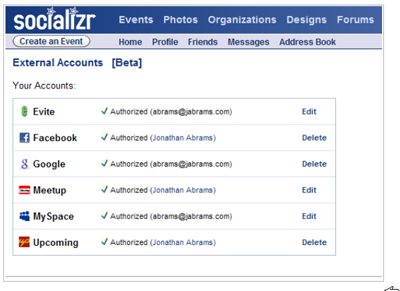
Crunch Network: CrunchGear drool over the sexiest new gadgets and hardware. | ||||||||||||||||||||||||||||||||||||||||
| AOL Appeals To Users To Visit Propeller Again Posted: 15 Apr 2009 12:02 AM PDT
A variety of changes were made over time, including paying news submitters to lure them from Digg, changing the name to Propeller.com, and occasional layoffs. They even added a mascot. But nothing has stopped the decline of the site, and now AOL is appealing to previous users to come and give it another try. A year ago 4.6 million people a month visited the site (Comscore worldwide). Now its 2.1 million, more than a 50% decline in unique visitors. Page views have also dropped by 50%, to just 6 million/month. Revenue is likely in the low hundreds of thousands of dollars per month at best, meaning that it is almost certainly costing AOL money to keep the lights on at the site. It’s pretty clear that Propeller is a candidate to enter the deadpool, although the upside is the people working on it could go to more interesting projects at AOL. But they’re not giving up just yet. In an email to registered users who haven’t signed in recently (that would be me), Propeller General Manager Tom Drapeau said:
I have my doubts as to whether this’ll lead to a spike in unique visitors next month, but it shows they still have some fight in them. Good luck, Tom. I hope our next post on Propeller is something more positive. Crunch Network: CrunchBoard because it’s time for you to find a new Job2.0 | ||||||||||||||||||||||||||||||||||||||||
| Google Profiles Take An Important Social Step With Vanity URLs Posted: 14 Apr 2009 09:43 PM PDT
The service now has an option to use vanity URLs for your profile page, as the blog Digital Inspiration found. This means that rather than having a page located at http://www.google.com/s2/profiles/3223lkn23lkn or some nonsense, it now can reside at http://www.google.com/profiles/YOURGMAILNAME. If you have a Gmail or Picasa account, the URL will feature the user name you chose for those. Otherwise, you can pick a name as long as it’s not taken by another Gmail/Picasa account. This vanity layer helps these profiles not only be more user-friendly for sharing, but it will undoubtedly help them show up more often in actual Google Searches. And the ability to search these profiles is clearly important to Google. Back in November of last year, it added search functionality to the Google Profiles area. Still, it seemed like few used it. A few weeks later it rolled out a few other improvements to Profiles, including the ability to pipe in picture feeds and have thumbnails show up. But still, the moves went largely unnoticed.
But Google is clearly trying to build these profiles up as an area you go to to find social information about someone. And it’s not just tied to Google products, as Flickr photos can be piped into these profiles, for example. Google looks to be essentially creating a de-facto social network profile page, without having an actual social network around it. Apparently, Google, and all its services, are the social network. Vanity URLs came up recently when we reported that Facebook was finally getting serious about using them. Unfortunately, it is still only for its Pages area, where celebrities and other people of note can get them, but regular users are still stuck with the http://facebook.com/profile=02938042039840 nonsense. Go claim your Google Profile vanity URL now here. Crunch Network: MobileCrunch Mobile Gadgets and Applications, Delivered Daily. | ||||||||||||||||||||||||||||||||||||||||
| SoundCloud Raises €2.5 Million For Professional Music Collaboration Hub Posted: 14 Apr 2009 08:43 PM PDT SoundCloud, an audio sharing site geared towards music professionals, has closed a €2.5 million (around $3.3 million) funding round led by Doughty Hanson Technology Ventures. As part of the deal, Stefan Tirtey of Doughty Hanson will join the company’s board of directors. We last covered SoundCloud in October, when the site launched in a private beta. Since then it has opened to the public, and now claims 100,000 registered members. The site’s primary function is to help musicians, producers, and other professionals in the music industry share and collaborate around music tracks. These tracks tend to be quite large in size, which makes them difficult to transfer (typically musicians would be forced to resort to FTP or services like YouSendIt, which are hardly ideal for frequent music swapping). SoundCloud solves this issue, allowing members to swap files without having to download them to listen (you can stream them straight from the SoundCloud servers). Musicians can also optionally allow their peers to download their tracks, and can use the site’s analytics to see who has listened to them. The site also offers an embeddable music player that musicians can distribute across the web (example below) which allows users to leave a comment directly on a portion of a song (for example, I could append a comment in the song’s timeline stating that I liked a certain guitar solo). Crunch Network: CrunchGear drool over the sexiest new gadgets and hardware. | ||||||||||||||||||||||||||||||||||||||||
| Twitter Fight! Larry King To Kutcher: CNN Will Bury You Posted: 14 Apr 2009 07:26 PM PDT
So far, it’s not working all that well for Kutcher. He is gaining followers at a remarkable rate — he now has over 870,000 followers — yesterday he had under 850,000. But CNN is gaining them just as quickly. Yesterday they stood just above 900,000 and now they’re just under 930,000. So Kutcher has stepped up his game slightly, offering Guitar Hero to the person who is his millionth follower. Come on Ashton, you can do better than that. King, meanwhile, promises to take on any challenge Kutcher throws his way. He notes, “I’ll go on your…Twitter — or whatever it is you do.” But he corrects Kutcher that Ted Turner (the subject of Kutcher’s throw down yesterday) doesn’t actually run CNN anymore. But, he notes that Turner is likely to accept an offer to meet Kutcher face to face on Larry King’s show to discuss the feud. So what does everyone think — has Twitter officially jumped the shark now? Larry King is offering to devote a show to a fake race to a million followers — a good majority of which are probably spammers or fake accounts — on a service that sends 140 character messages. It’s nice to see all these big time names using the same services we all use, but come on guys, surely there’s some real news going on out there (which I fully expect will be echoed about us in the comments of this post — beat you to it!). Crunch Network: CrunchGear drool over the sexiest new gadgets and hardware. | ||||||||||||||||||||||||||||||||||||||||
| March ComScore Search Numbers Offer A Sign Of Hope For Google Posted: 14 Apr 2009 07:09 PM PDT
ComScore released its search market share numbers tonight for March, 2009 and the first quarter. After a dip in February, the number of searches done in the U.S. on Google and the other top search engines recovered in March. ComScore estimates there were 9.125 billion searches done on Google last month, up 11 percent from February. That growth outpaced the growth at the other search engines (Yahoo, Microsoft, AOL, and Ask), resulting in Google gaining half a percentage point in market share to 63.7 percent. On an annual basis, Google’s core U.S. search volume was up 41.7 percent for the month of March and 40.6 percent for the quarter. That exceeds Yahoo’s 25.5 percent annual growth for the quarter and Microsoft’s 13.9 percent growth. ComScore’s estimates only cover domestic core search, and often don’t correlate directly with what Google itself reports, but if Google is seeing search volume re-accelerate that could mitiagte some of the other factors contributing to what analysts expect to be a bad quarter. Here are the figures for growth in the quarter, the month, and total market share (courtesy of J.P. Morgan): Y/Y Growth In Core U.S. Search Queries, Q1 2009 (Source: comScore qSearch)
Y/Y Growth In Core U.S. Search Queries, March 2009 (Source: comScore qSearch)
U.S. Core Search Share, March 2009 (Source: comScore qSearch)
Crunch Network: CrunchBoard because it’s time for you to find a new Job2.0 | ||||||||||||||||||||||||||||||||||||||||
| An Embarrassed Warner Music Regrets MySpace Music Deal Posted: 14 Apr 2009 07:09 PM PDT
Labels are known to give streaming rates for on demand music of around half a cent per song play, but they are negotiated on a deal by deal and label by label basis. Journalists have tried repeatedly to understand the rates that MySpace is paying since the volume means lots of dollars are at stake. MySpace has always guarded this information closely, since it’s a competitively valuable piece of information. But there’s another reason they may be so secretive - the deals they cut with the four big labels may all be very different. And the deal they cut with at least one label, Warner Music, may not have streaming rates at all. Our sources say Warner has been complaining about the deal they did with MySpace. That deal has no per song streaming cost, but includes a revenue share on advertising displayed when the song is played. That revenue share hasn’t been what they thought it would be. And the staggering number of plays of songs from their catalog, combined with their newly acquired knowledge that their competitors are being paid per stream, has left them steaming mad. Warner will get little sympathy from, well, anyone. But they’re telling people that they plan to make changes when their deal comes up for renewal, or pull their music from the service. But the fact that their revenue share is significantly less than they thought it would be means MySpace Music may not be monetizing as well as they had hoped. That means the whole ecosystem may be in danger. If MySpace is facing tens of millions of dollars in losses every year (or more) from royalty payments, it’s only a matter of time before they’ll give up. Already the service does things to limit streaming and associated costs, like only playing four songs on a playlist before asking if you are still there. That leaves the door open for services that have different business models and allow for the user experience to come first. See LaLa and the still fantasy-land MOG music service that look promising. MySpace Music refused to comment on this post. Crunch Network: CrunchBase the free database of technology companies, people, and investors | ||||||||||||||||||||||||||||||||||||||||
| Shocker: AT&T Wants To Keep Sitting On Its Golden Egg (The iPhone) Posted: 14 Apr 2009 06:45 PM PDT
Following the launch of the iPhone 3G last year, Apple and AT&T met again to look at their partnership. The two sides decided to extend the pact until 2010. But that apparently isn’t good enough for AT&T which now wants to extend its exclusive deal into 2011, The Wall Street Journal reports. This should be absolutely no surprise as AT&T added over 4 million subscribers in the second half of last year just for the iPhone. And some 40% of those were new AT&T customers, as WSJ points out. Clearly, the iPhone is a major catalyst for getting users to switch services, which is important for AT&T as it trails the number one wireless provider Verizon in terms of overall users. And the iPhone isn’t just important to AT&T for new users — I know plenty of iPhone owners who are not exactly fans of AT&T’s sometimes spotty service (see: Om Malik and anyone who was at SXSW). If AT&T loses its exclusive deal with the device, a lot of those users would be gone in a flash. You’d have to think that eventually Apple is going to expand the iPhone beyond AT&T. It’s several million units in the US, which is huge, but is a small sliver of the overall market. And it could grow that several times over if it was available on all the carriers just in the US alone. But that would also mean headaches for Apple, as being on multiple carriers means dealing with multiple carriers and could mean irregularities for things such as applications. Maybe some carriers won’t mind certain bandwidth-heavy apps while others will, for example. And Apple gets a sweet deal with AT&T. At first, it got a piece of each monthly contract that AT&T signed up for the device, but it switched that last year in order to subsidize the iPhone 3G (bringing it down to the key $199 price point). Now, Apple gets paid a reportedly sizable chunk of money by AT&T for each iPhone sold. This also removes the headache of worrying about users who are unlocking the device. Another element to all of this that is pure speculation at this point, but is worth thinking about. Apple’s tablet device, rumored to be coming later this year, could very well have 3G connectivity built into it. Obviously, it would need a carrier to provide that. And you can bet AT&T wants to be that carrier as well. [photo: flickr/thor dekov buur] Crunch Network: CrunchGear drool over the sexiest new gadgets and hardware. | ||||||||||||||||||||||||||||||||||||||||
| Why Amazon Didn’t Just Have a Glitch Posted: 14 Apr 2009 05:29 PM PDT
This a Guest Post by Mary Hodder, founder of Dabble.com, a social video search site and blogger for Napsterization. Hodder is a veteran Silicon Valley technologist and was most recently VP of Products at Apisiphere, a geolocation mobile company building an enterprise platform for mobile developers. This post is in response to the Amazon’s removal of sales rankings on a number of gay- and lesbian-themed books due to a glitch. Webopedia defines an algorithm as:
The ethical issue with algorithms and information systems generally is that they make choices about what information to use, or display or hide, and this makes them very powerful. These choices are never made in a vacuum and reflect both the conscious and subconscious assumptions and ideas of their creators. The ethics bar in creating algorithms and classification systems should be very high. In fact I would suggest that companies with power in the marketplace, both commercial and ideas, should consider outside review of these systems’ assumptions and points of view so the results are fair. Algorithms are often invisible, and difficult to detect by design, because technologies that use them are designed not to share the methods for providing information. This is mainly because users are focused on the tasks at hand in information systems, and given good information, they don’t need to know everything under the system’s hood, and because technology makers like to keep the ’secret sauce” hidden from competitors, not to mention people who would game systems for their own devices such as spammers or other bad actors. However, the flip side of this is the lack of notice to users of the assumptions that a system is making, which may not even be apparent to those building the system. Systems that filter out useless, spamming or other uninteresting information also can filter out other things without notice. When a page is full of data, it’s often very difficult for someone to recognize what is missing. This is a sort of “where’s Waldo” situation except that in the mass of data shown, there isn’t a Waldo. Waldo is invisible. This weekend it was discovered that Amazon had filtered out some books as “adult” even though those books had minor sexual or erotic themes (fiction) or were non-fiction discussion classes of people associated with particular sexual orientations. Apparently, these filters began to pop up two months ago and while Amazon was notified at the time, many — including me — weren’t aware of the problem until Mark Probst, author of "The Filly," realized his book was missing it’s “sales rank” from Amazon. He questioned them, and they replied:
Sunday afternoon, I noticed after investigating the issue, that twitter had about 500 posts every 15 minutes with the tag: #AmazonFail. A petition appeared with 400 signatures and quickly jumped to 2,000 within a couple of hours, and then to 10,000 by Monday morning. Tweets were at a high of 6,500+ midday Monday over a 45 minute period. Using the tagging system in Amazon, users tagged about 1,000 books that generally have gay and lesbian themes with AmazonFail (whether non-fiction historical or fictional stories, whether soft-erotic — think Jackie Collins level stuff — or documentary on things like the military policy “don’t ask don’t tell”). Books like Lady Chatterley’s Lover, and The Mayor of Castro Street and Maurice by EM Forester and Conduct Unbecoming, a history of gays and lesbians in the military, were included. Here is a comparison example for the details section of Amazon pages, where one book has it’s sales rank by Amazon, and another is missing: Note that the second book, A Parent’s Guide to Preventing Homosexuality (Paperback), has many reviews (most of which have gone up in the past 48 hours and are negative) in part I think because this is the top result for the search: “Homosexuality” in Amazon’s system. Note that Amazon came out late Monday with the explanation that this was all “a glitch” in a statement to Publisher’s Weekly, however that contradicts earlier email from them to authors stating that they were in the “adult” category simply for including positive gay and lesbian themes in their works and that’s why they lost their “Sales Rank” statistic that would keep them in search results. It was a very targeted glitch for sure. Targeted to, among other things, “positive references to sexual orientation == gay” placing them into the “adult” category, which allowed the other minor “glitch” by the programmer to be possible. If all this seems like a problem, and it should, it’s because Amazon is using algorithms, which rely on their classification system, with various statistics like “Sales Rank” to rank products in search results on the site. These algorithms and classifications have points of view. Their point of view, revealed this week, is that “positive references to sexual orientation == gay” is “adult” in nature. And that classifications will be used in the algorithms to sort out what is shown and what does or does not get to have “sales rank,” which then orders items in search results. And we all know search result order can lead to big sales, or invisibility. The SEO industry and Google bank big on that point. Search for “homosexuality” in Amazon and this is the top result:
While Amazon “Sales Rank” numbers in part determine the ordering of search results, I’m guessing that the number of user activities around a listing, such as reviews, may also be a factor because yesterday when I did this search, the 5 books ranked following “A Parents Guide…” were also anti-homosexuality. Today, the four that follow are positive toward homosexuality (at a glance), and from what I can tell there are many new reviews and comments on these books. The issue with #AmazonFail isn’t that a French Employee pressed the wrong button or could affect the system by changing “false” to “true” in filtering certain “adult” classified items, it’s that Amazon’s system has assumptions such as: sexual orientation is part of “adult”. And “gay” is part of “adult.” In other words, #AmazonFail is about the subconscious assumptions of people built into algorithms and classification that contain discriminatory ideas. When other employees use the system, whether they themselves agree with the underlying assumptions of the algorithms and classification system, or even realize the system has these point’s of view built in, they can put those assumptions into force, as the Amazon France Employee apparently did according to Amazon. This of course doesn’t explain how the problem arose two months ago, and why when Amazon was notified, they didn’t look into it then. I would suggest that the same underlying assumptions that drove their classification and algorithm system to be built to filter “gay” into “adult” also led their investigations in February and March to lead to nothing. It was only public outrage this past weekend that caused them to look harder, beyond their own assumptions, to find the underlying problem. The bar for ethics in creating algorithms and classification systems should be very high. #AmazonFail proved it’s not, at least at Amazon. I would venture that Amazon’s classification and algorithm system have more of these discriminatory assumptions, and while their tagging system does allow users to correct for some of this, Amazon is using it’s internal classification system in it’s filters, not user tagging, that I can tell. I would suggest that the company, because of its position in the market and power over both authors and publishers, as well as users and the intellectual marketplace of idea, ought to be doing a complete and public review of their classification and algorithm assumptions. Publishers and authors should push for it, and so should users. Crunch Network: MobileCrunch Mobile Gadgets and Applications, Delivered Daily. | ||||||||||||||||||||||||||||||||||||||||
| Medialets beats Apple to a billion when it comes to the iPhone Posted: 14 Apr 2009 04:31 PM PDT
Medialets has now processed over a billion events on the iPhone and iPod touch by way of its analytics product, Medialytics. What this means is that the company, which launched on the same day as Apple App Store last July, has seen that much activity coming from the apps that use it on those platforms. Currently, because Medialytics is installed on so many different apps (it says “many” of the top downloaded iPhone apps), it has found its way on over 13 million unique devices — nearly half of the iPhones and iPod touches sold. And over the past 10 months all of this data has taught Medialets a lot about the iPhone platform. One interesting metric is engagement. Medialets says it’s seeing between 3.5 and 7 minutes of average usage per session. App makers may be even more interested in ad click-through rates. Since its launch, Medialets is seeing click-throughs of between 1 and 8 percent. Crunch Network: CrunchGear drool over the sexiest new gadgets and hardware. | ||||||||||||||||||||||||||||||||||||||||
| Test Drive: Honda Bodyweight Support Assist Posted: 14 Apr 2009 03:45 PM PDT  As I mentioned earlier, Honda is in town to demo their two walking assist devices for the first time in the US. I was given the opportunity to test both models out in midtown Manhattan this afternoon. The applications for both models are pretty obvious and Honda has been testing the Bodyweight Support Assist at their Saitama factory since November of last year. They both offer a surprising amount of support while walking, crouching and traversing stairs. The BSA is pretty awkward at first but you get used to it after a few seconds. Yes, I'm staring at my crotch more than usual and duck walking, but it's a bit strange to have something like the BSA between your legs while you're trying to walk. What you won't see in the video is how to get the device on. It comes with shoes that are attached to the legs that, you know, you put on. There are two switches on each thigh section of the legs that you switch on and then you pull up the saddle between your legs and off you go. I won't lie, it's a little awkward, but you get used to it. It's also surprisingly lightweight at around 6.5 lbs. Update: The entire presentation including the Q&A is now available to watch after the jump. As I mentioned earlier, Honda is in town to demo their two walking assist devices for the first time in the US. I was given the opportunity to test both models out in midtown Manhattan this afternoon. The applications for both models are pretty obvious and Honda has been testing the Bodyweight Support Assist at their Saitama factory since November of last year. They both offer a surprising amount of support while walking, crouching and traversing stairs. The BSA is pretty awkward at first but you get used to it after a few seconds. Yes, I'm staring at my crotch more than usual and duck walking, but it's a bit strange to have something like the BSA between your legs while you're trying to walk. What you won't see in the video is how to get the device on. It comes with shoes that are attached to the legs that, you know, you put on. There are two switches on each thigh section of the legs that you switch on and then you pull up the saddle between your legs and off you go. I won't lie, it's a little awkward, but you get used to it. It's also surprisingly lightweight at around 6.5 lbs. Update: The entire presentation including the Q&A is now available to watch after the jump. | ||||||||||||||||||||||||||||||||||||||||
| Live Stream That Intense World Of Warcraft Session With Mogulus Procaster Posted: 14 Apr 2009 03:36 PM PDT
Mogulus’ is launching a new desktop application tonight called Procaster. On the front end, it’s a simple app that offers one-button streaming of video out to the web. But behind its simple exterior, the tool has the ability to stream high definition quality video that isn’t possible when encoding on the fly over its current web-based Flash player. But much more interesting are the side features of the new app. With Procaster, you can easily do both screen and game broadcasting. With the click of a button you can share your desktop screen over the web and talk over it during a live broadcast. Other apps out there allow you to do this, but as Mogulus CEO Max Haot likes to describe it, Procaster allows you to do a “Steve Jobs keynote-like” screencast. That’s because Procaster has a nice feature which allows you to show the desktop screen while also showing a smaller screen of you talking about what is on screen. With the click of a button you can switch between this dual view to just the desktop or to just yourself talking. It’s all quite seamless. You can also zoom in on any area of a screen to highlight it with the click of a button. And, Procaster features a chat window to allow you to better interact with those watching your stream. Even more interesting may be the game-casting feature. This allows gamers to broadcast themselves playing a game like World of Warcraft live while talking over it. While you may not see much of a market for this, currently on Mogulus, they are already seeing gamers doing this by way of their own makeshift methods. And some of these streams are getting 20,000 concurrent viewers, Haot tells me. With Procaster, all of this can be done using any standard computer. Hoat sees this as a potential “game changer for presentation technology.” Procaster is being unveiled right now at the NY Video Meetup. It will be available to download tonight here. Right now it’s PC-only, but a Mac version is in the works. I took the screen capture below of Haot showing it off to me, live, over the web using Procaster.
Crunch Network: CrunchGear drool over the sexiest new gadgets and hardware. | ||||||||||||||||||||||||||||||||||||||||
| AOL Redesigns Shopping Search. But Is It Better Than Yahoo’s? Posted: 14 Apr 2009 03:35 PM PDT 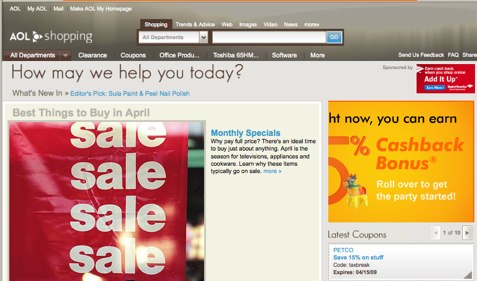 In the midst of the recession, consumers are either cutting back on spending or actively looking to reduce expenses. And with retail sales plunging during March, decreasing by 1.1% compared to February, it looks like retailers are in for the long haul when its comes to the virtual drought in consumer spending. What better time for AOL to completely overhaul the design of its comparison shopping site, AOL Shopping, to promote recession-friendly deals, coupons and sales to consumers across its site. Coincidentally, Yahoo’s comparison shopping site, Yahoo! Shopping, has the same features, but wrapped up in a different interface. AOL Shopping’s homepage showcases a “monthly specials” slideshow, featured prominently above the fold of the site. Users can click on to a “monthly specials” page with the best deals of the month, up-to-date coupons and sales, or they can flip through the slideshow to see AOL’s recommendations for what products have the best deals. For April, AOL says televisions, appliances and cookware are your best bets. Also, each page on the site displays coupons to the right side of the page, which are fairly random and don’t correspond to what you are looking at on the page. For example, I was doing a search for “Tory Burch Flats,” and was shown a coupon for pet supplies at Petco. AOL Shopping has confirmed that the site has signed on new advertisers for the relaunch of its site, including Dell, Discover, Sephora, Bank of America, Barnes & Noble and Sears. AOL’s advertising model for the site has also become more flexible, with advertisers now given the option to run ads for a one-day section, site-sponsorship or a year-long ad deal. Given the state of the economy and the downturn in ad spending, it’s not surprising that AOL Shopping chose a more open approach to ad sales. Comparison shopping sites generally make money through advertising and affiliate fees, which can be charged as a flat fee or as a fee each time a user clicks through to the retailer web site or completes an action. Yahoo! Shopping’s site, whose recession-friendly features appear to have been launched prior to AOL’s overhaul, features an above-the-fold sales feature on the front page, leading consumers to a sales and deals site called “Yahoo! Deals.” Almost identical to the AOL’s “monthly specials” page, “Yahoo! Deals” has coupons, deals, and sales sections. Yahoo!’s search filters are more comprehensive than AOL’s, allowing you to narrow your search results by price, color, and material (I was looking for shoes). AOL doesn’t appear to have any search filters. But Yahoo! doesn’t give you the coupons next to your search results like AOL Shopping now does. It does appear that some deals and sales are exclusive to each site. AOL featured a deal on a Calphalon pan, which I couldn’t find on Yahoo. But I found a deal for a Nintendo game on Yahoo for $20, which was listed at $27.99 on AOL. Both sites offer competitive deals, coupons and sales for consumers. But Yahoo!’s is more user-friendly because of superior search filters, search suggestions in the search box, and the ability to see results in a grid view or list view. It appears that AOL is playing catchup to Yahoo! in adding the recession-friendly features. They may also be trying to play catch up to Yahoo!’s number of visitors. According to comScore, Yahoo!’s shopping site received 23.4 million unique visits in March with AOL only receiving 5.4 million uniques in the same month. Other popular comparison shopping sites include Pricegrabber.com, BizRate, Shopzilla, and NexTag.  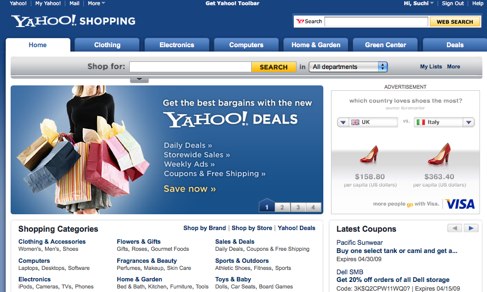 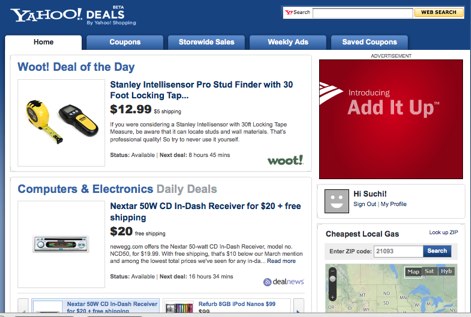 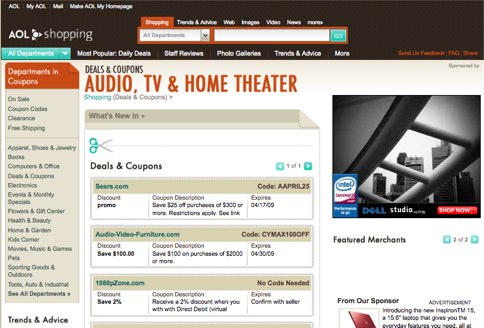 Crunch Network: CrunchGear drool over the sexiest new gadgets and hardware. | ||||||||||||||||||||||||||||||||||||||||
| MasterCard’s ATM Hunter Is The Latest Must-Have For Your iPhone Utility Belt Posted: 14 Apr 2009 02:46 PM PDT For the last few months Apple has been running ads telling us that no matter what we need to do with our iPhones, “there’s an app for that”. More often than not, they’re right - the App Store is loaded with gems that really can make life that much easier. Unfortunately they’re not always so easy to find. Such is the case with ‘ATM Hunter‘, a free iPhone application built by MasterCard that allows users to quickly find the ATMs closest to them. The app, which was released late last month, has a measly 15 reviews despite being ranked as the 11th most popular app in the App Store’s finance section (which apparently doesn’t see too much traffic). This isn’t the first ATM app on the market - some banks have built their own, and there are a handful of independent apps like iATM (iTunes Link) available too. But MasterCard’s database seems to be much more thorough, offering ATM locations of banks along with those found in restaurants, retail stores, bars, and convenience stores. For those users who are strongly opposed to bank fees, ATM Hunter lets you narrow down results to branches from your own bank. You can also filter results based on criteria like operating hours, surcharges, wheelchair accessibility, and drive throughs. My only complaint is that unlike competitors like myATM (iTunes Link), there’s apparently no way to see every nearby ATM plotted on a map (you can only see one at a time). In my initial tests the app fared quite well, pulling up every ATM in the area that I was aware of (and many that I wasn’t). It’s nothing revolutionary, but damn if it won’t come in handy.
Crunch Network: CrunchBase the free database of technology companies, people, and investors | ||||||||||||||||||||||||||||||||||||||||
| Calling All Investors: eBay Announces Plans To IPO Skype In 2010 Posted: 14 Apr 2009 01:51 PM PDT
As we reported earlier, eBay has been having trouble finding ways of using Skype across its other products (which CEO John Donahoe admits in a quote from the press release). eBay removed Skype co-founder and CEO Niklas Zennstrom in October 2007, reportedly due to frustration at the financial performance of Skype. Ebay also negotiated down the huge earn-out due to Skype stockholders and took a $936 million one-time loss around the transaction. Last year, Skype generated revenues of $551 million, up 44 % from 2007, and eBay recently announced that it expected its subsidiary to top $1 billion in revenue in 2011. Registered users reached 405 million by the end of 2008, up 47 percent from 2007. Skype now accounts for 8 percent of all international calls by one estimate, and that number is going to keep on growing. The company also puts much emphasis on the achievements of the current management team, and also touts the fact that Skype for iPhone has been downloaded so many times (1 million times in the first 36 hours alone, to be exact), while I think its recent announcement regarding opening up for SIP, and thus for business users, was much more significant in my opinion. With both this move and yesterday’s announcement about StumbleUpon’s founders buying back that company after having sold it to eBay for $75 million in 2007, it’s obvious that eBay is doing what it’s supposed to do in a recession (and arguably, should have done long before): return to its roots as a pure online marketplace with one strong, related company under its wings (PayPal). The fact that it is opting for an IPO instead of considering a private sale back to the founders suggests that the founders were unable to raise the necessary cash or that there is so much bad blood between there that Donahue decided it isn’t worth the reputation risk of selling it back and watching them succeed. Meanwhile, Skype’s founders and eBay are embroiled in a legal dispute over Skype’s license to certain peer-to-peer technologies which Skype’s founders still control through a company called Joltid, and which form the technological foundation of Skype. For the most part, announcing plans now for an IPO that won’t take place until 2010 is mostly for the benefit of Wall Street. eBay announces earnings next week, and these divestitures show that it serious about getting rid of distractions. But if Skype all of a sudden begins contributing meaningful profits to eBay or it cannot resolve its dispute with the founders, eBay has plenty of time to pull the IPO or find another buyer. Setting the IPO date does nothing more than set the clock for other parties to put in their bids. EBay stock was up 4.4% in after-hours trading - it closed at $14.38.
(Via @BreakingNews) Crunch Network: CrunchGear drool over the sexiest new gadgets and hardware. | ||||||||||||||||||||||||||||||||||||||||
| Video: Homeless Frank Buys A Crappy Plastic PC To Use As A Blanket Posted: 14 Apr 2009 12:26 PM PDT
In 63 seconds of pure mockery, the video’s creators, LandlineTV.com, are actually able to show off some of the holes in Microsoft’s argument in these ads. “Windows Vista Home Premium? This is bullshit,” Frank notes while checking out a PC. Sure, it’s a crude way of putting it, but a lot of users are not happy with Vista, and Microsoft fails to mention its software at all in its ads. Frank goes on to ask, “is this plastic?,” while picking up one of the PCs. He continues, “this whole line of motherboards are just second-rate Korean components.” Yes, one of the reasons some PCs are cheaper than Macs is that the parts and components they use are cheaper than their Mac counterparts. “I’m poor, but I’m not retarded,” Frank notes at one point in the video. That speaks to the idea that while Microsoft is smart to play the cheapness card in a down economy, there are at least some reasons that shoppers have been buying Macs in recent years, raising their market share. And it’s not just to get the Apple logo. Find one of the real Microsoft ads, featuring “Lauren,” below the Frank spoof. And CrunchGear has its own thoughts on the spoof. Crunch Network: CrunchBoard because it’s time for you to find a new Job2.0 | ||||||||||||||||||||||||||||||||||||||||
| Goom Gets $16 Million To Litter Web Radio With Beyonce And DJs Posted: 14 Apr 2009 11:55 AM PDT
Not only is Goom clearly trying to play the popular music card with a website littered with the likes of Coldplay, Kanye West, Beyonce and Britney Spears, but it promises to have “passionate programmers” and DJs. I don’t know about you, but I had two core reasons that I stopped listening to traditional radtio long ago: Crap music, and DJs. Goom, apparently, sees those as strong suits. Not that there’s anything necessarily wrong with that. Pop music got that name for a reason, it’s popular. And popularity on the web means users. And users means people you can serve ads to and get paid — which is Goom’s business model for the time being, according to VentureBeat. To be fair, you can also tailor your own stations based around your musical tastes, just as you do on the aforementioned Pandora. And you can upload your own music to the service to stream yourself from anywhere, just as you can with imeem. And the services promises high quality with its proprietary HD sound. But Goom is clearly putting resources into hiring “experienced” DJs, conducting interviews and even dishing out news (presumably about music). And it has raised a $16 million round of funding from Wellington Partners Venture Capital, Elaia Partners and Partech International to help it do all of that. The service features the tagline “redefining radio for the digital generation,” but I wonder if the other services that already exist in the field haven’t already done that? Instead, Goom looks to be a way for the digital generation to rediscover traditional radio. And at a time when web radio is struggling to monetize against high streaming royalty fees, is bringing in DJs and programmers really the best use of funding? You can sign up to be a part of Goom’s beta launch on its site. Update: Goom contacted us to let us know that one of the key advantages it feels it has over its competitors is its solid executive team, which consists of a team with more than 20 years of experience inside both the realms of radio and technology. This includes CEO Rob Williams who previously was the President and Market Manager for Clear Channel New York. A fair point, though that doesn’t change my opinion about how the product is being sold to the public. Crunch Network: MobileCrunch Mobile Gadgets and Applications, Delivered Daily. | ||||||||||||||||||||||||||||||||||||||||
| It’s Official: Twitter Is More Popular Than Britney Posted: 14 Apr 2009 11:39 AM PDT
Not a day goes by without hundreds of mentions of Twitter on blogs and TV (we’re as guilty as anyone), which naturally leads those still puzzled by the service or simply curious to learn more to search for it in Google. Those searches have been growing at a faster rate than even the service itself. In fact, the term “Twitter” seems to be one of the fastest growing search terms of all these days. How popular is it? More popular than “britney.” Twitter surpassed “Britney” a few months ago, and has even caught up to “Obama” (actually it is slightly ahead right now), according to Google Trends. That is remarkable, given that Britney was one of the most searched for words of all last year. Still, maybe the switch says more about her than about Twitter. (Obama’s popularity as a search term has come down to more reasonable levels after huge spikes last November and during the inauguration). Twitter is still dwarfed by Facebook, both on terms of traffic and as a search term. According to Google Trends, the keyword “facebook” is 81 times more popular than “twitter.” In terms of news references, however, the two are much closer. In the chart below, the top graph is search volume, and the bottom one is news references:
Finally, if you look at the Google Trends for Websites graph for Twitter.com, it looks like there is a tiny dip at the end there. After a period of such torrid growth, it certainly deserves to take a breather. But it cannot afford to take too much of a breather, otherwise people will stop talking about it and Britney will have her revenge.
Crunch Network: CrunchBase the free database of technology companies, people, and investors | ||||||||||||||||||||||||||||||||||||||||
| Posted: 14 Apr 2009 08:55 AM PDT
In an effort to try to build some viral buzz for its Google Latitude product, Google is encouraging people to create a custom video and e-mail it to all their friends. (That’s right, e-mail. There is no embedding option). The video shows a bunch of Googlers spreading out across San Francisco with their Latitude-enabled mobile phones. At the end of the video, their avatars spell a message, which can be customized to say whatever you want. I made a video that says “Crunch It.” Latitude is Google’s geo-location service. It uses your phone’s GPS, Google Maps, and Gmail contacts to broadcast your location to your contacts (or hide your location from select contacts/bosses/girlfriends). Crunch Network: CrunchBoard because it’s time for you to find a new Job2.0 |
| You are subscribed to email updates from TechCrunch To stop receiving these emails, you may unsubscribe now. | Email delivery powered by Google |
| Inbox too full? | |
| If you prefer to unsubscribe via postal mail, write to: TechCrunch, c/o Google, 20 W Kinzie, Chicago IL USA 60610 | |

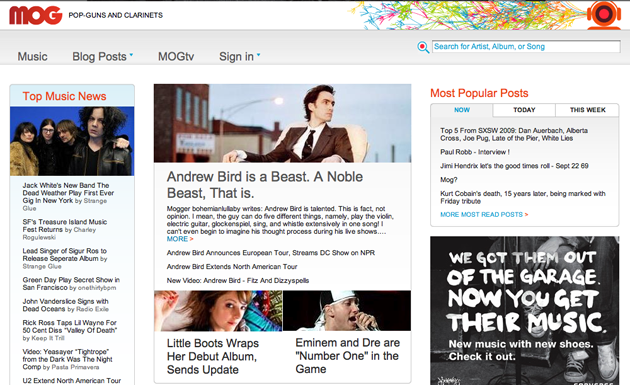
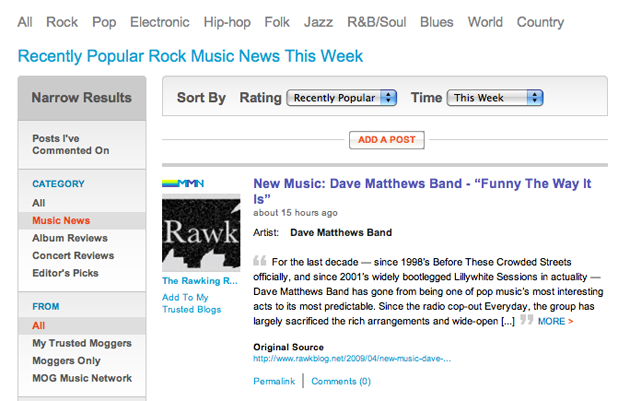
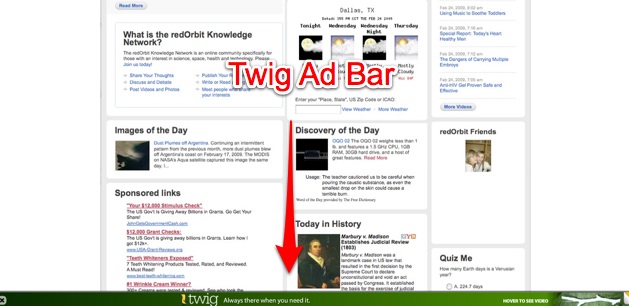
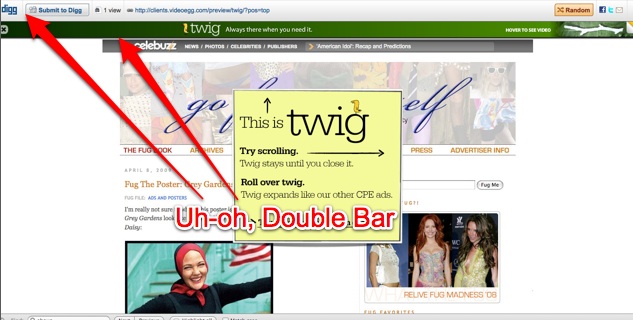

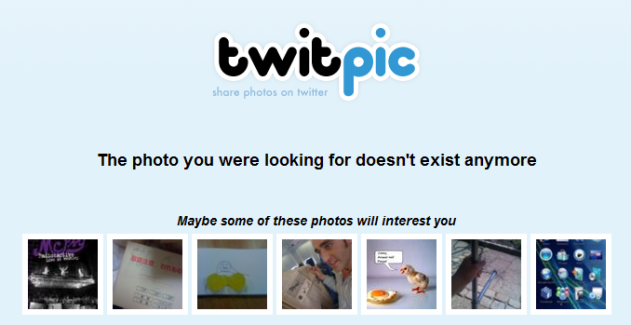

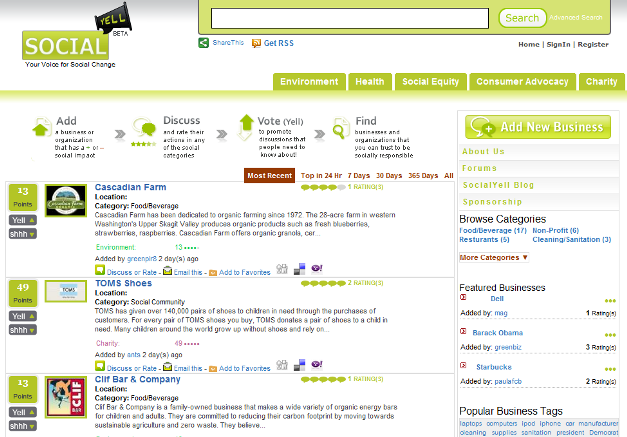
 Yesterday, Silicon Valley’s local CBS affiliate ran a story (
Yesterday, Silicon Valley’s local CBS affiliate ran a story ( iSkoot’s Notifier
iSkoot’s Notifier 


 The problem with Google’s movement towards becoming more of a social entity is that it lacks one cohesive place to tie everything together. YouTube has social elements, Picasa has social elements, even Google Maps has social elements, but Google lacks this singular area — like a Facebook profile page — where all of this information can reside and be easily seen. But actually, it has such an area,
The problem with Google’s movement towards becoming more of a social entity is that it lacks one cohesive place to tie everything together. YouTube has social elements, Picasa has social elements, even Google Maps has social elements, but Google lacks this singular area — like a Facebook profile page — where all of this information can reside and be easily seen. But actually, it has such an area, 

 “Do you know how big we are? Do you know what CNN is?!” Them fightin’ words — from longtime CNN host Larry King to Ashton Kutcher. King sent out the
“Do you know how big we are? Do you know what CNN is?!” Them fightin’ words — from longtime CNN host Larry King to Ashton Kutcher. King sent out the 


 One thing is for certain - the six month old
One thing is for certain - the six month old  When Apple was looking for a mobile partner for the iPhone, it originally went to Verizon. When Verizon
When Apple was looking for a mobile partner for the iPhone, it originally went to Verizon. When Verizon 


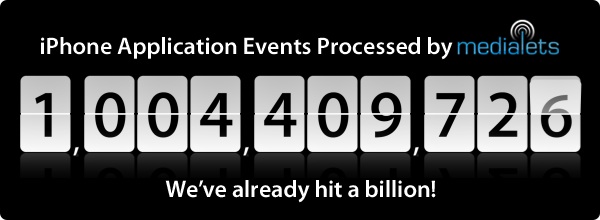 Mobile analytics and advertising company
Mobile analytics and advertising company  Live streaming is hardly new on the web. And a lot of startups are focused on it. One of them,
Live streaming is hardly new on the web. And a lot of startups are focused on it. One of them, 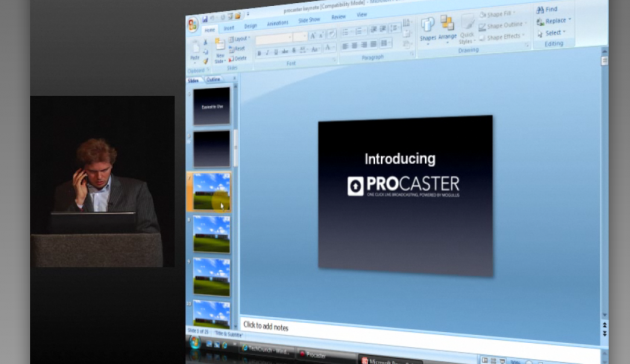


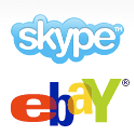 After
After  Given that Microsoft’s new “Laptop Hunter” ads do little else but play up the fact that you can find PCs that are cheaper than Macs, it was only a matter of time before the parodies started rolling in. The first one, dubbed “
Given that Microsoft’s new “Laptop Hunter” ads do little else but play up the fact that you can find PCs that are cheaper than Macs, it was only a matter of time before the parodies started rolling in. The first one, dubbed “ One of the reasons that Internet music streaming services
One of the reasons that Internet music streaming services 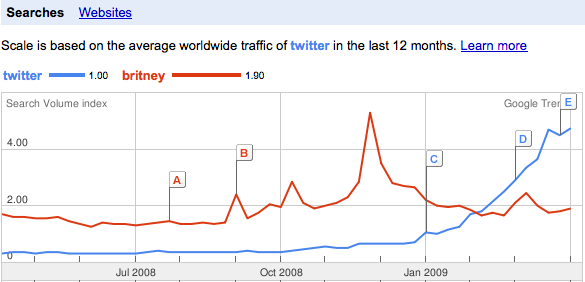
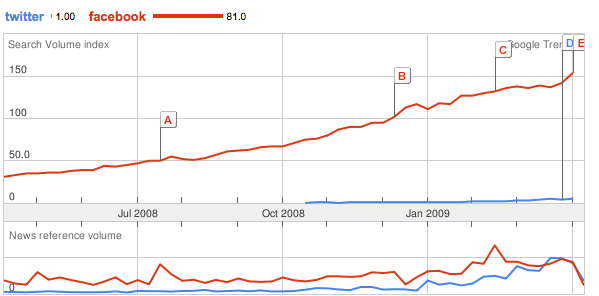
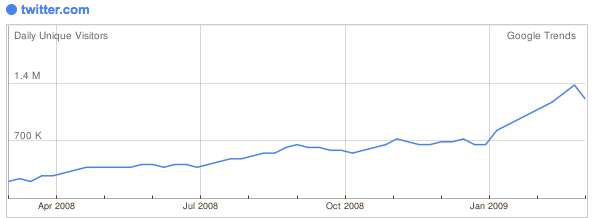
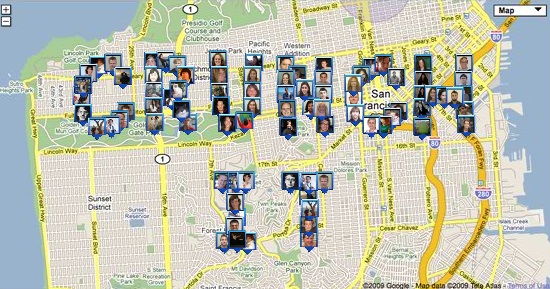
No comments:
Post a Comment